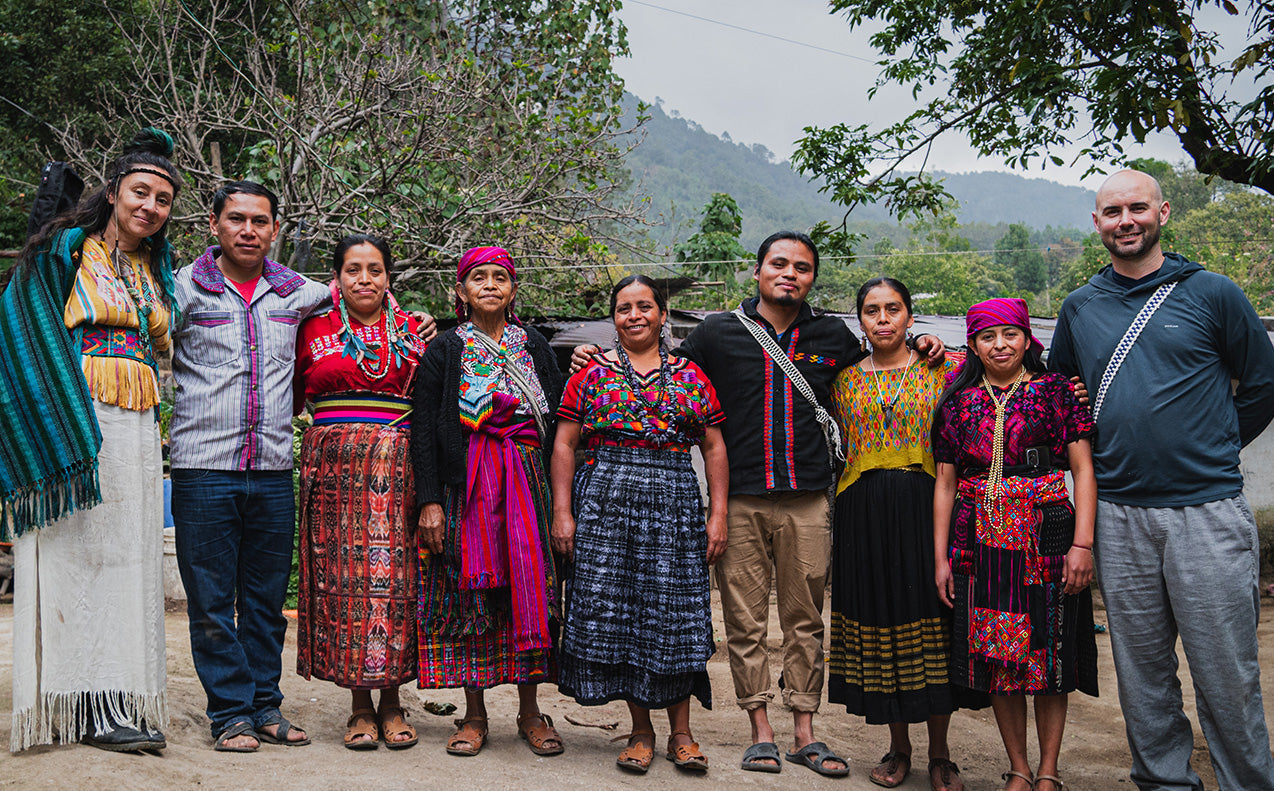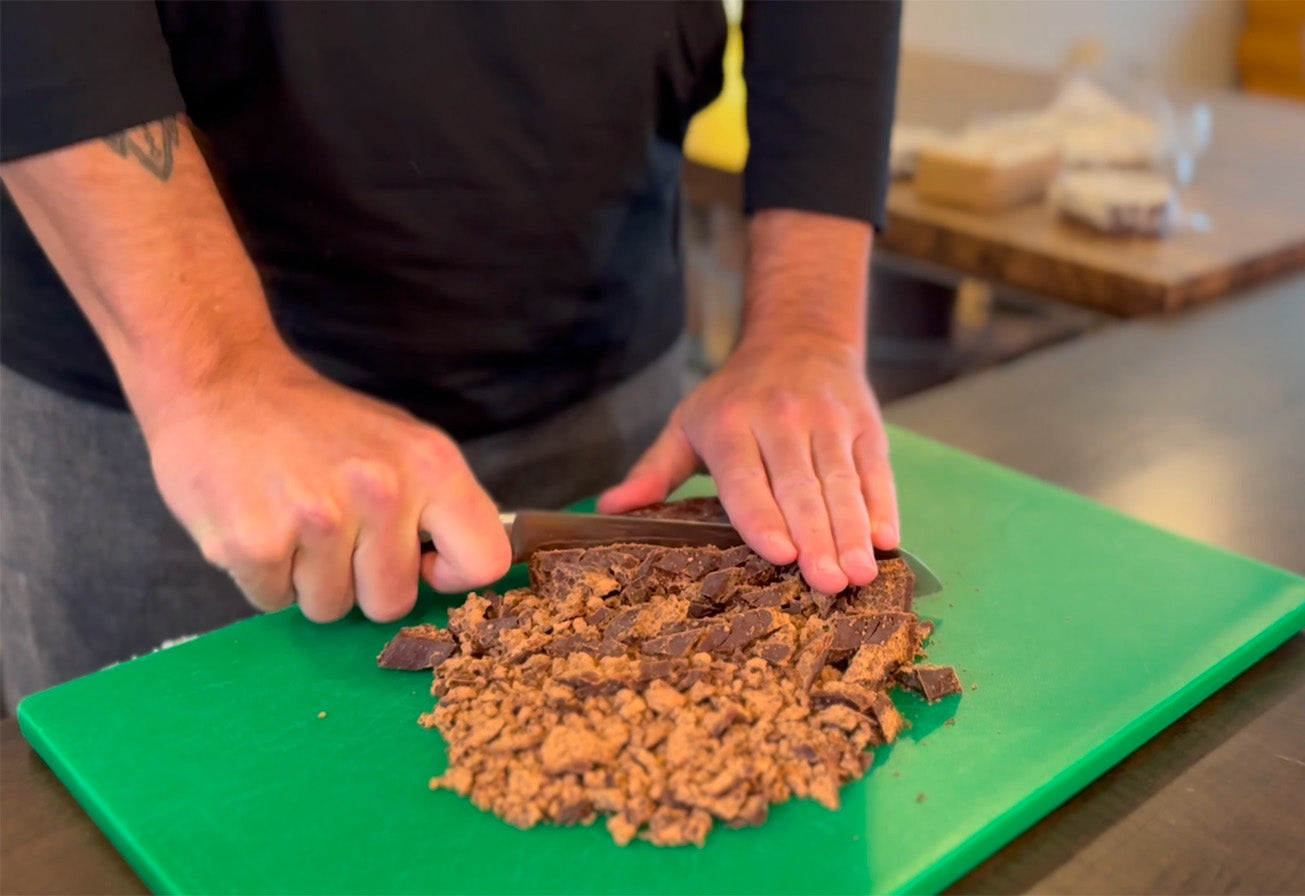(First published Jan 18, 2023. Last updated Dec 19, 2024.)
*Disclaimer: The information in this article is intended for educational and informational purposes only. It is not a substitute for professional medical advice, diagnosis, or treatment.
Sometimes people ask about the possible presence of heavy metals in chocolate and cacao.
In late 2022, the publication Consumer Reports tested many popular brands of chocolate and then ran an article claiming that most of them contained concerning levels of heavy metals. [1]
This is an important subject that Soul Lift Cacao has been aware of and calmly keeping an eye on since 2020. Based on our expertise, we think that the risks are not as severe as this article has led the public to believe.
Apparently publications running these articles care more about generating "click bait" than about creating journalism with proper context.
While there are plenty of reasons to avoid industrial chocolate, it's a bit of a misconception to think this is an "industrial chocolate versus ceremonial cacao" issue. (Plus people use the term "ceremonial cacao" to mean different things.)
In general, the numbers don't vary that much with cacao we've seen, so amount and frequency of consumption need to be taken into account.
BUILDING CONTEXT
It's important to understand if and when heavy metals can appear in foods. But in order to do that, we have to look deeper and build enough context that it would actually be relevant.
It’s a little known fact that trace amounts of heavy metals occur naturally in many foods, because they occur naturally in nature. [2] Cacao (the original form of chocolate) isn’t unusual in that way, even if the cacao is grown without chemical pesticides or fertilizers. In other words, it doesn't seem to be an issue of pollution.
In the case of cacao, reports say that cadmium uptake can occur if the soil is too acidic, whereas lead tends to come in during the processing. But either way, these are naturally occurring in the environment. As we'll see later, there have been cases where humans have adulterated food ingredients with lead.

The reason to be concerned at all is that heavy metals accumulate in the body, and in large amounts they can potentially cause or contribute to major health issues. In most cases it's not an issue of a single serving, but about potential accumulation over time.
In 2020 – even before the clickbait appearing about chocolate – we began having all our cacao varieties tested for heavy metals by an unbiased, third-party laboratory. We thought it was strange that the lab was not willing to provide interpretation on the results.
We later discovered that there’s no single standard for what is safe or not safe in terms of the concentration or amount of lead and cadmium in chocolate.
LOOKING AT DIFFERENT ADVISORIES
The FDA advises a lead limit of 0.1 ppm (i.e., parts per million, or micrograms of the heavy metal per gram of food, i.e., µ/g), and CODEX advises a cadmium limit of 0.9 ppm. [3, 4, 5]
These are the standards we are most comfortable following in terms of whether we decide to bring a cacao variety onto the line-up.
But interestingly, the FDA advisory for lead is specifically regarding candy sold to children. There's no specific FDA advisory for heavy metals in chocolate. We can only assume that this is because there has never been a public health crisis regarding heavy metals in chocolate.
Consumer Reports doesn’t explain that there’s not a universally agreed-upon standard for heavy metals in food or that they're only using California Proposition 65 (a.k.a. Prop 65) standards for evaluation. This is part of what limits the article’s context and makes it prone to sensationalism.
Prop 65 appears to be one of the strictest systems in the world, and definitely more so than standards set by the FDA and CODEX. Prop 65 only applies to products and consumers in California.
Interestingly, the 2017 legal settlement that led to the creation of California’s advisory system ruled on limits that were actually higher than the current FDA and CODEX amounts. Those were 0.225 ppm for lead and 0.960 ppm for cadmium, for products with 95% or more cacao. [7]
It’s also relevant to note that Prop 65 limits (which are now listed in micrograms per day rather than ppm) are standardized for all foods; they’re not specific to cacao or chocolate.
Currently California has a limit of 0.5 micrograms of lead per day, and 4.1 micrograms of cadmium per day. [8]
The size of a business also matters. As Proposition 65 says, "Businesses with fewer than 10 employees and government agencies are exempt from Proposition 65’s warning requirements." Soul Lift Cacao falls within that exemption.
Consider this example: even if a product has 200% the daily Prop 65 limit it means, under that system, having a serving every other day could be considered safe. But for some reason, Consumer Reports and publications regurgitating their claims don't offer that context.
In the case of ceremonial cacao, we’ve always recommended enjoying it a few days a week and taking some days off. There are a variety of reasons, like making sure we’re enjoying cacao with intention, and not misusing it for a jolt of energy.
(Read below to learn about a 2023 public health crisis regarding applesauce containing cinnamon that was intentionally aldulterated with lead chromate.)
BUT WHAT DOES THIS ACTUALLY MEAN?
It’s also important to look closely at Prop 65, which has advisories regarding the possibility of both cancer and reproductive harm (that is, harm which could occur to a fetus during development in the womb). [8] Limits regarding cancer are published as No Significant Risk Levels (NSRL), whereas limits regarding reproductive harm are published as Maximum Allowable Dose Levels (MADL).
California’s NSRL for lead is considerably high at 15 micrograms, compared to the MADL amount at 0.5 micrograms. It seems extremely uncommon for a cacao variety to have more than 5 micrograms of lead even in a “ceremonial serving” (containing 1.5oz or 42g of cacao), which would be about 10 times the MADL. But most people are not having a ceremonial serving more than a couple times per month, so we interpret that to be still within safe levels (viewing a month as 30 days average).
And the amounts of lead in cacao simply don’t pose a risk for cancer, if we’re going by CA’s NSRL. For that someone would have to have more than 3 ceremonial servings every day for a long time, which we don’t believe is physically possible.
For cadmium, the MADL of 4.1 micrograms per day is the only CA oral advisory (the NSRL for cadmium is based on possible inhalation). But the average we’ve seen in even a ceremonial serving was about 4 times that amount. So again, as long as it’s used in moderation, it’s probably not going to be a huge issue.
Since reproductive harm is the most relevant advisory, the main time this could be a legitimate concern is during pregnancy. But it doesn't seem to be like alcohol, where total abstinence is necessary. It’s more a matter of moderation and being careful about product choice. Although, articles on the subject also advise children and the elderly to use higher caution about heavy metal exposure.
We believe that more research and interpretation need to be done for the general public, because it appears to be a body of knowledge that's gradually emerging. If you’re still concerned, we recommend consulting a medical professional. If a doctor tells you to avoid chocolate during pregnancy, then of course you'd also want to avoid cacao.
The bottom line is that articles like the one from Consumers Reports take an unethical approach to this subject, and cast a lot of chocolate as unsafe that's essentially safe for most people.
AN EXAMPLE OF AN ACTUAL PUBLIC HEALTH CRISIS
For helpful perspective on the chocolate discussion, just look at a 2023 public health crisis involving lead in applesauce. The FDA reports that a spice manufacturer in Ecuador intentionally added lead chromate to cinnamon, which was later distributed in various applesauce products in the U.S. [11] This resulted in lead ppm counts about 2,000 times higher than the FDA's advised limits for bark spices! The New York Times reports that 400 children got sick. [12]
A case like this suggests a change is needed in how we think about trace amounts of heavy metals in food. As NYT reports, "Some experts have even begun to question the C.D.C.’s position that there is 'no safe level' of lead, given its ubiquitous nature and the minor effects that low levels have had on millions of children in the United States." In other words, there's a DRASTIC difference between trace amounts naturally occurring in foods, and amounts resulting from human adulteration.
While the concerns over heavy metals in chocolate seem exaggerated, we do disapprove of chocolate companies choosing to ignore this issue altogether.
We are committed to transparency. So here's the breakdown of test results on the pure cacao varieties we are carrying as of June 2024.
NOTE: some labs report a lead result of less than 0.100 as "none detected," which would be the case for most of these.
DOWNLOAD THE LAB REPORT PDF'S HERE
Like we said above, with cacao and chocolate it's not really about one serving. It's best to look at the big picture and think about dietary practices over time.
One interesting takeaway has been a debunking of the theory that cacao grown closer to volcanoes will have a higher amount of heavy metals. In fact the varieties grown closest to active volcanoes had lower numbers overall. Those were Lavalove, Fuego, Siguacan, and Parcelitas.
We will continue to do everything in our power to keep our products safe for you, so that you can gain the most possible benefit when you enjoy them.
And we believe that greater understanding leads to peace of mind. We hope this gives you some of that.
REFERENCES:
[1] "Lead and Cadmium Could Be in Your Dark Chocolate" by Kevin Loria. Consumers Reports. Published 12/15/2022. Accessed 1/18/2023. https://www.consumerreports.org/health/food-safety/lead-and-cadmium-in-dark-chocolate-a8480295550/
[2] https://time.com/6243073/heavy-metals-dark-chocolate-food/
[3] 1 ppm = 1 milligram per kilogram, or 1 microgram per gram: https://www.toppr.com/ask/question/concentration-1-microgram-per-gram-is-x-ppm-then-the-value-of-x-is/
[4] FDA on Lead: https://www.fda.gov/regulatory-information/search-fda-guidance-documents/guidance-industry-lead-candy-likely-be-consumed-frequently-small-children
Note: This statement is about candy. It doesn’t specifically mention chocolate or cocoa, and it is specifically an advisory regarding children.
[5] CODEX on Cadmium (See "International Scientific Activities"): https://www.fda.gov/food/environmental-contaminants-food/cadmium-food-and-foodwares
[7] Interim levels from 2017 ruling: https://grimaldilawoffices.com/proposition-65-settlement-may-establish-new-industry-standard-lead-cadmium-chocolate/
[8] CA on Cadmium: https://oehha.ca.gov/proposition-65/chemicals/cadmium
CA on Lead: https://oehha.ca.gov/proposition-65/chemicals/lead-and-lead-compounds
[9] 0.5 micrograms of lead / 28g of food = 0.018 ppm. 0.100 is the FDA lead advisory. 0.018 / 0.100 = 0.18 * 100 = 18%
4.1 micrograms of cadmium / 28g of food = 0.146 ppm (i.e., micrograms per gram). 0.800 ppm is the EU Commission cadmium advisory. 0.146 / 0.800 = 0.1825 * 100 = 18.25%
[10] Concentrations and bioavailability of cadmium and lead in cocoa powder and related products. https://www.tandfonline.com/doi/abs/10.1080/0265203031000077888
[11] Investigation of Elevated Lead & Chromium Levels: Cinnamon Applesauce Pouches (FDA, November 2023): https://www.fda.gov/food/outbreaks-foodborne-illness/investigation-elevated-lead-chromium-levels-cinnamon-applesauce-pouches-november-2023
[12] What to Know about Lead Exposure in Children (The New York Times): https://www.nytimes.com/2024/02/27/health/lead-poisoning-children.html
Related Posts

For years, the true value of authentic ceremonial cacao has been artificially suppressed. Soul Lift Cacao is proud to co
Read More
This video shows step-by-step how to make a cup of cacao using modern equipment. Once you get the hang of it, you'll be
Read More
Authentic ceremonial cacao has a lot to offer the world. Yet as this modern ceremonial cacao movement grows, there are l
Read More








